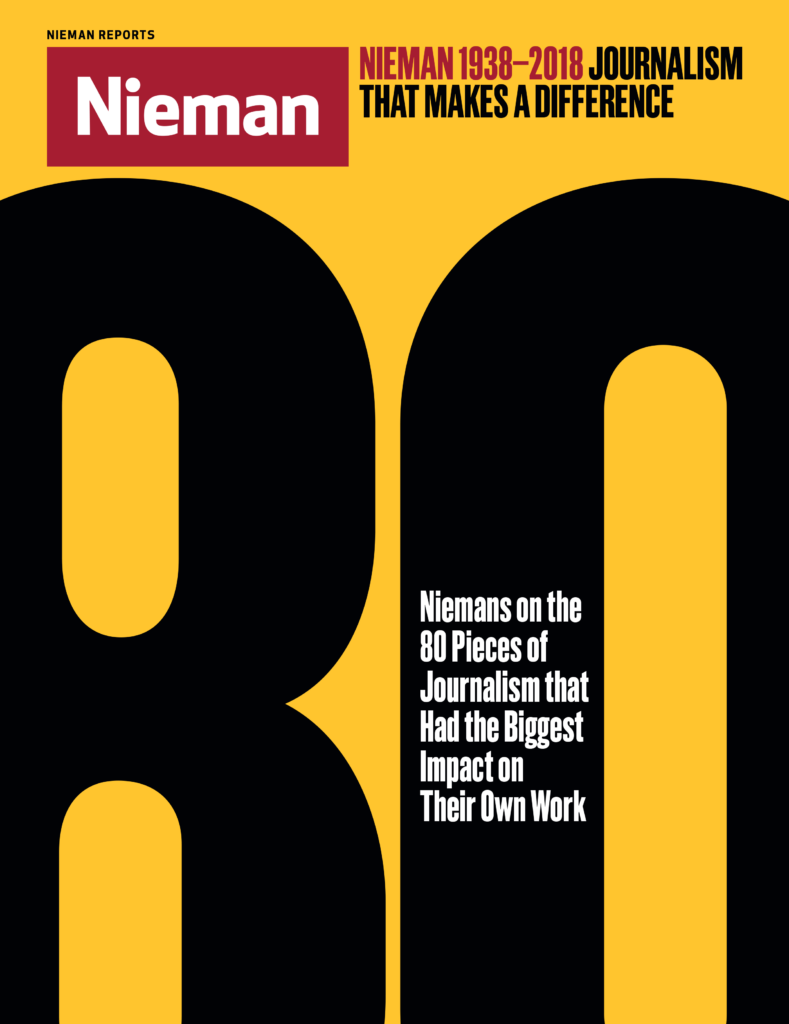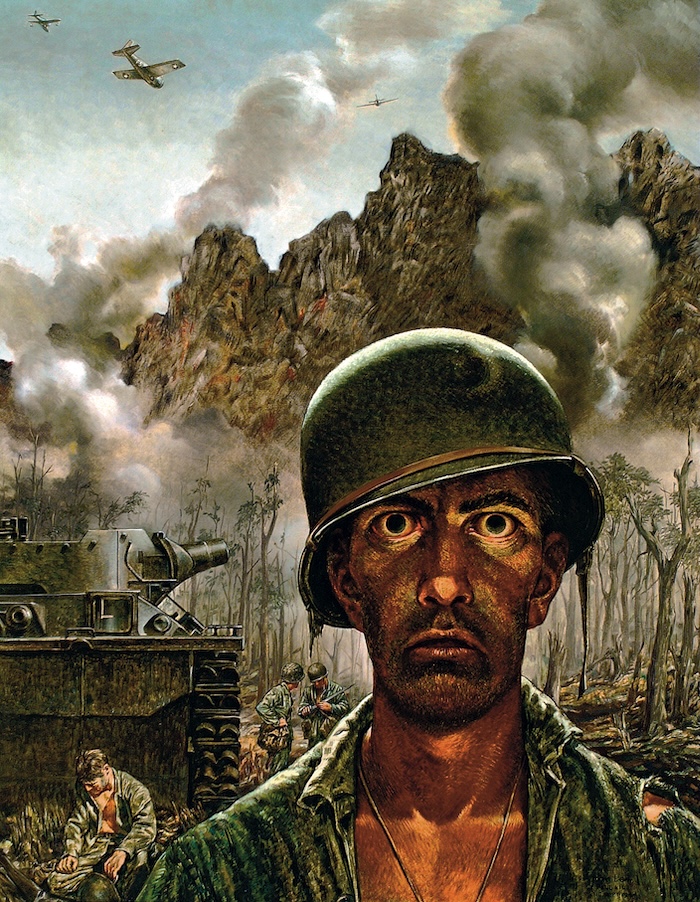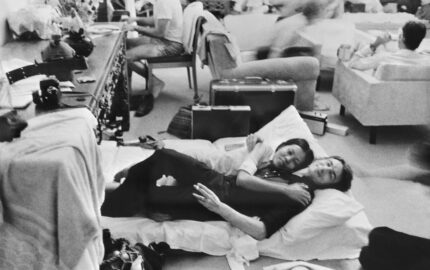
How are great journalists made? Often, it’s pieces of great journalism that help form them, influencing their lives or careers in an indelible way. To celebrate the Nieman Foundation for Journalism’s 80th anniversary in 2018, we asked Nieman Fellows to share works of journalism that in some way left a significant mark on them, their work or their beat, their country, or their culture. The result is what Nieman curator Ann Marie Lipinski calls “an accidental curriculum that has shaped generations of journalists.”
When I was just a kid growing up in Albany, Georgia, I pulled down from my dad’s bookcases a coffee-table book published by Life magazine. On page 460 in “The Second World War” was “That 2,000 Yard Stare,” a painting by Tom Lea. Long before the hellish aftermath of war got the name post-traumatic stress disorder, Lea captured it. I never forgot the image.
You can find photographs of soldiers, sailors, and Marines with the same blank stare from World War I when it was called shell shock or Korea when it was called battle fatigue or Vietnam when it began to be called PTSD or Iraq when it began to be treated, but in this painting it is distilled and transmitted in a way that forever burned it into my memory.
Four decades later I discovered my biological father (not my adopted dad) had been wounded by a mortar shell in the Battle of Peleliu, where Lea first saw the 2,000-yard stare. My father died of alcoholism, 25 years after he was wounded in action.
Lea was a civilian who had never been in ground combat before Peleliu. He hit the beach between waves of Marines under constant fire. He was armed with nothing but a Ka-Bar knife and a sketch pad. His principal mission for 48 hours was to stay alive and remember enough details to produce sketches, the source of 10 oil paintings.
Lea’s editor told his staff to “Print every damn one of them in color, and then I never want to see them again.”
When we think of the iconic images of World War II, many think of Joe Rosenthal’s photo of the flag raising at Mount Suribachi. I don’t. I think of Tom Lea, what he risked, and what he captured. His painting of the real cost of war is rarely exhibited.
That 2,000 Yard Stare
By Tom Lea
Originally published July 11, 1945, Life magazine
Painting



